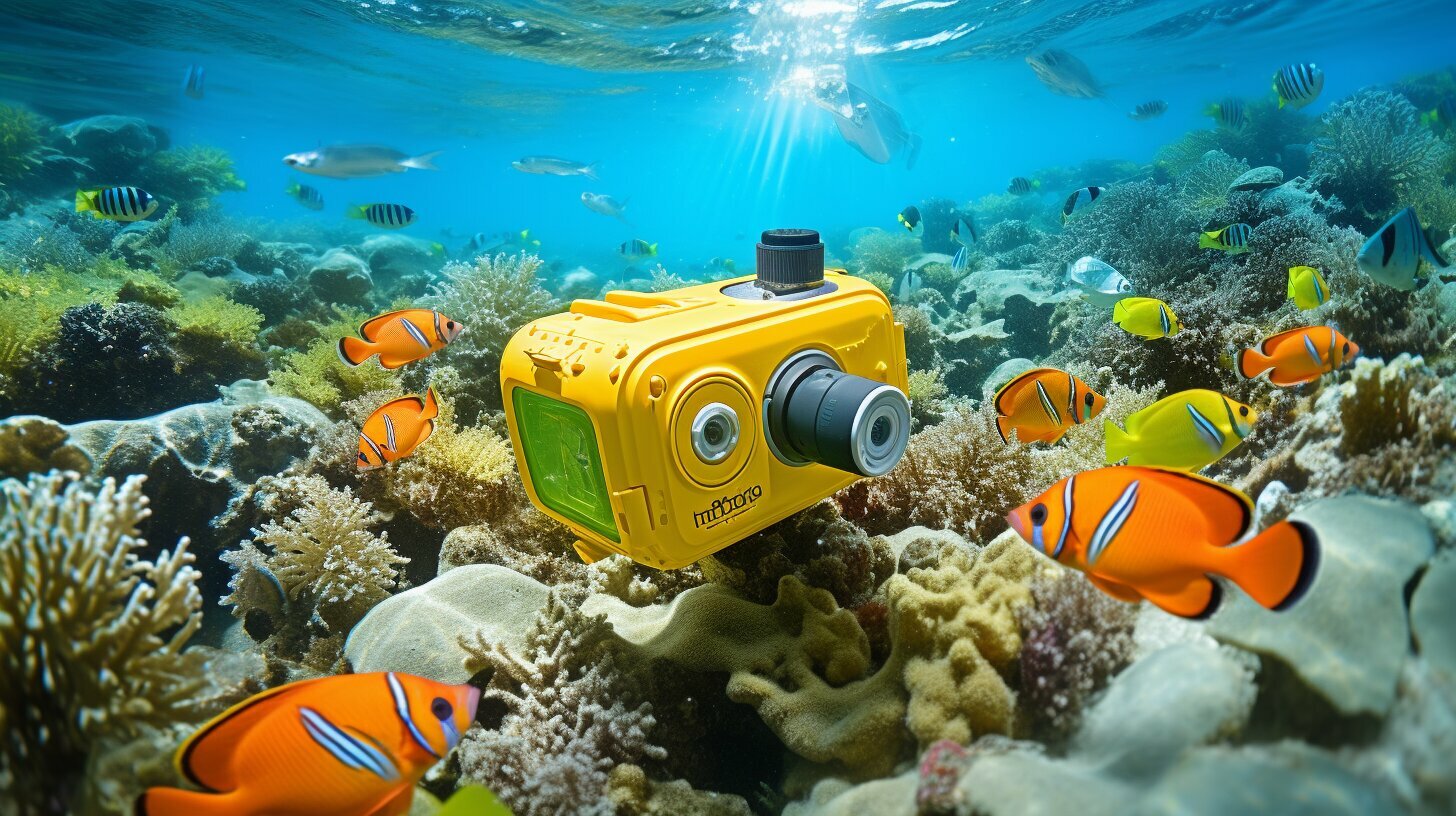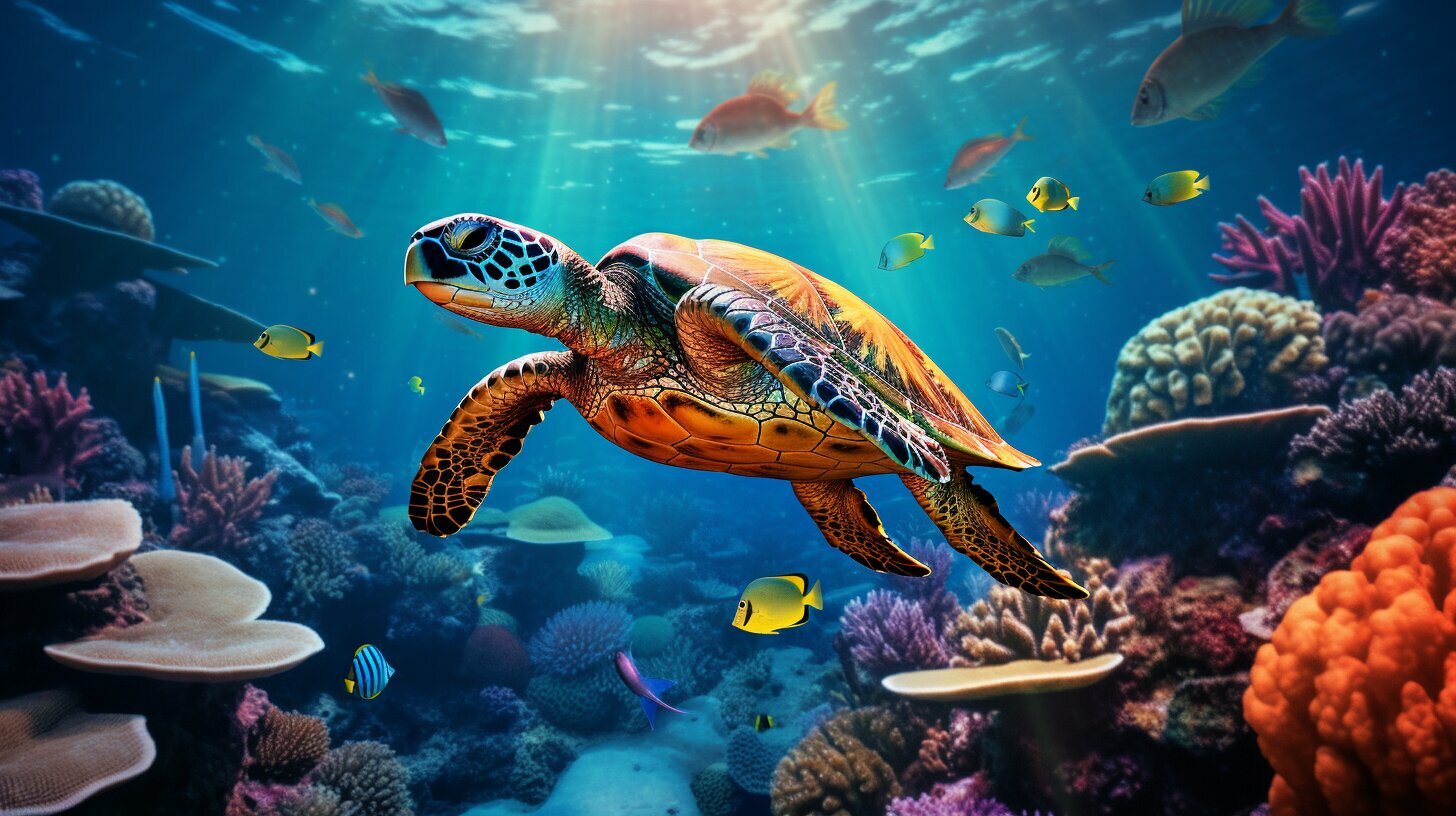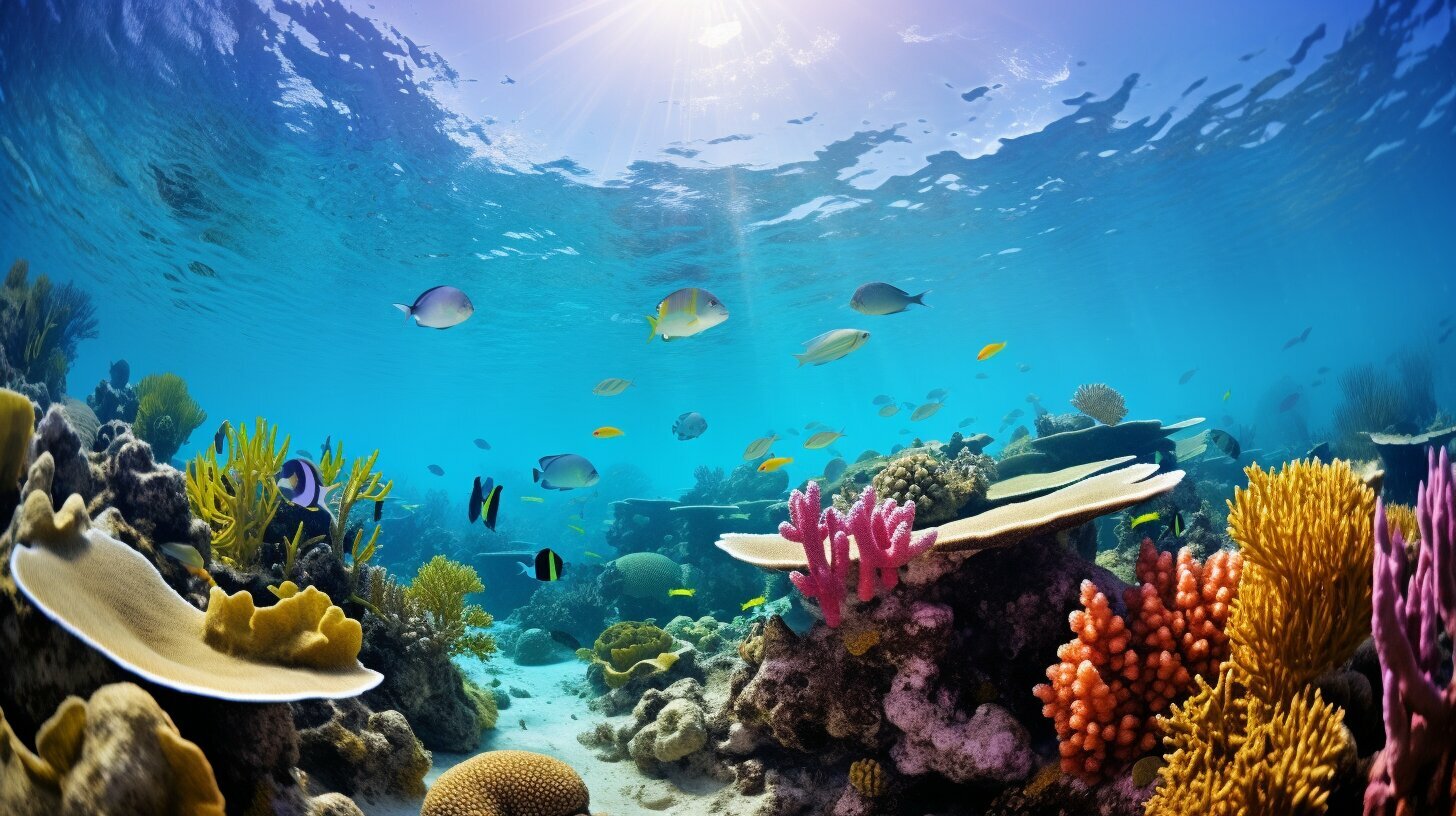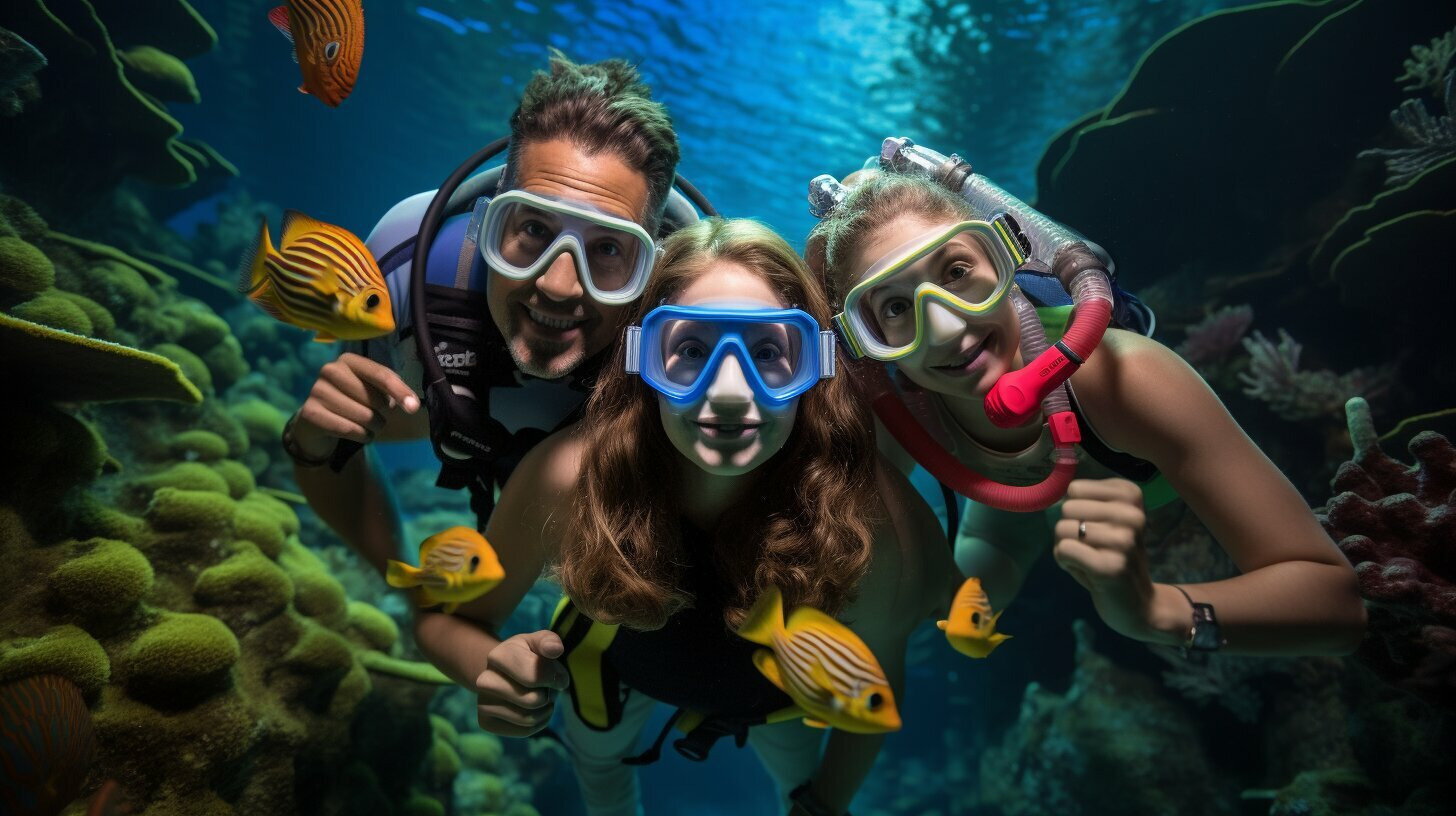Welcome to our comprehensive guide on mastering underwater photography specifically for snorkelers. Whether you’re a beginner or have some experience, this step-by-step guide will walk you through the essential tips and techniques for capturing stunning imagery of the vibrant marine life you encounter while snorkeling. In this guide, we will cover the fundamental concepts of underwater photography, the necessary equipment, snorkeling photography techniques, and tips for taking photos underwater.
Underwater photography for snorkelers can be challenging, but with the right approach and gear, it can be an incredibly rewarding experience. With the help of this guide, we hope to inspire and guide you on your journey towards becoming a skilled underwater photographer.
Key Takeaways
- Underwater photography for snorkelers can be challenging but rewarding
- You need the right equipment for successful underwater photography
- Understanding the basics of composition, lighting, focus, and camera settings is crucial for producing stunning underwater photographs
- Practical tips and techniques for snorkeling photography can help you overcome challenges and improve your skills
- Editing and enhancing your underwater photographs can take your images to the next level
Understanding the Basics of Underwater Photography
Before diving into the world of underwater photography, it’s essential to understand the fundamental concepts that govern it. Capturing marine life with a camera while snorkeling requires more than just pointing and shooting. You need to consider various aspects such as composition, lighting, focus, and equipment specific to snorkelers to create stunning imagery.
Composition plays a crucial role in creating visually appealing underwater photographs. Proper framing of your subject, the use of leading lines, and understanding the rule of thirds can make a significant difference in your photographs’ overall quality.
Disclosure: When you buy through links on our site, we may earn an affiliate commission.
Lighting is another essential aspect that can make or break your underwater shots. Understanding how to utilize natural light and different artificial lighting options can significantly improve your photographs’ quality.
Focus is the key to creating sharp and detailed underwater photographs. It’s essential to understand how to focus on your subject while dealing with the challenges of shooting underwater.
Choosing the right equipment is just as important as understanding the fundamental concepts. The right underwater camera and accessories are essential for successful underwater photography.
In the upcoming sections, we will go more in-depth into each of these concepts, providing snorkeling photography techniques and tips for taking photos underwater, while also covering the necessary equipment and accessories that can help you master the art of underwater photography for snorkelers.
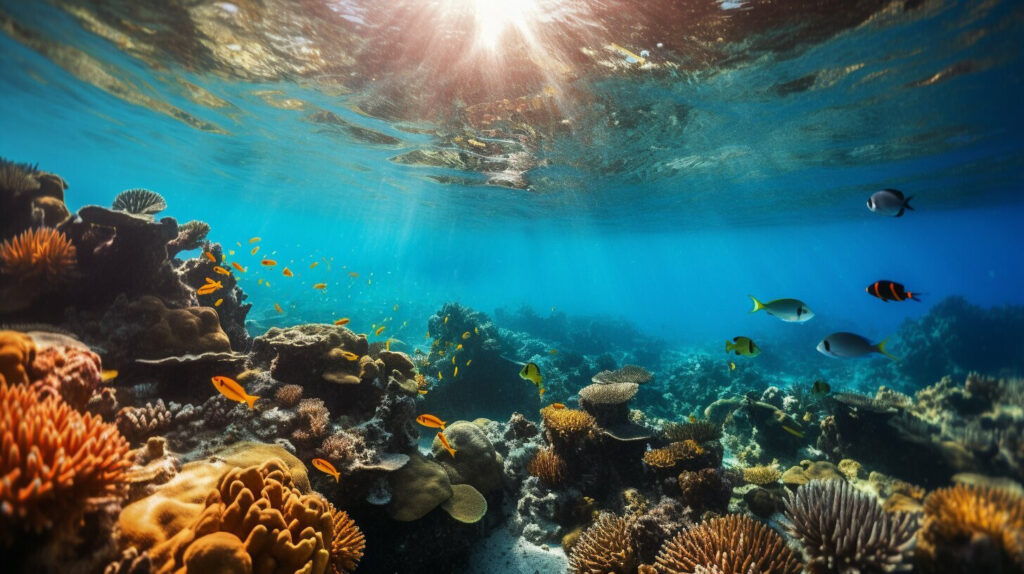
Choosing the Right Underwater Camera Equipment
You need specialized equipment to capture stunning images while snorkeling. Choosing the right underwater camera equipment is crucial to successfully capturing marine life with a camera. You should consider purchasing gear that meets your skill level, budget, and photographic needs.
There are various types of cameras available, including compact cameras and mirrorless cameras. Compact cameras are affordable and straightforward to use. They are also portable, making them an excellent option for snorkelers. Mirrorless cameras, on the other hand, deliver higher-quality images, improved autofocus, and other advanced features.
When it comes to purchasing an underwater camera, you must consider the camera’s depth rating as well as its waterproof capability. For beginner snorkelers, you might consider a waterproof point-and-shoot camera with a depth rating of 10-20 meters. If you’re an advanced photographer and plan to dive deeper, you should consider a more robust camera housing with a higher depth rating.
While selecting the best underwater camera equipment, you should also consider the snorkeling camera settings. These settings will allow you to capture clear and sharp images underwater. Manually setting the aperture, shutter speed, and ISO will give you more control over your shots and help you capture vibrant colors and details.
The best underwater cameras for snorkeling come from reliable brands such as GoPro, Olympus, Nikon, and Canon. Choose a camera that caters to your specific needs and provides the necessary features and performance.
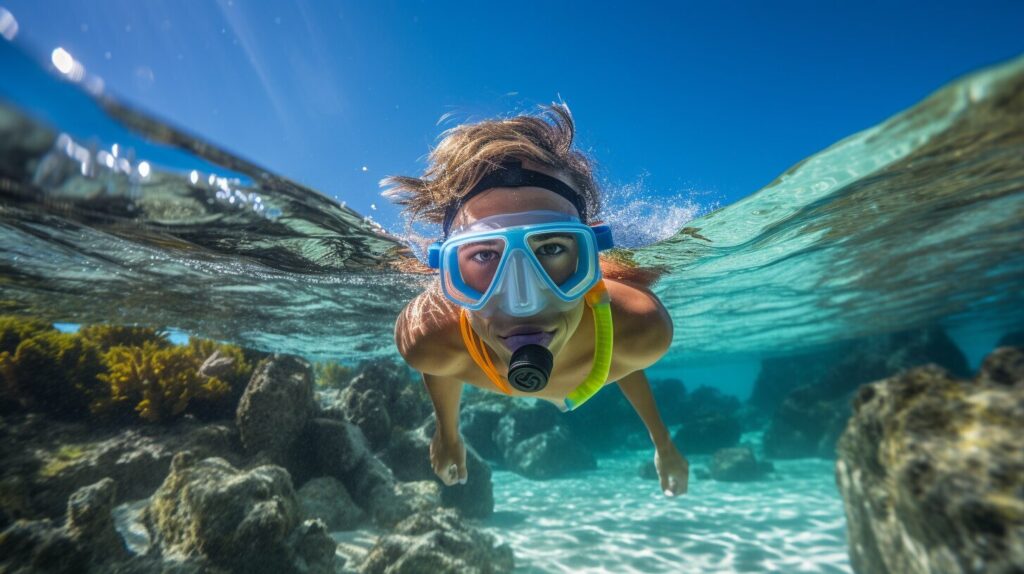
| Camera | Depth Rating | Price |
|---|---|---|
| Olympus Tough TG-6 | 15 meters | $$$ |
| Nikon COOLPIX W300 | 30 meters | $$ |
| Canon PowerShot D30 | 25 meters | $$$$ |
Learning Snorkeling Photography Techniques
Snorkeling photography requires specific techniques to capture stunning images of the vibrant marine life. Here are some snorkel photography tips and snorkeling photography techniques to help you take better underwater shots:
- Get close to your subject: Water can affect the clarity and color of your photos. To capture sharp images, get as close to your subject as possible.
- Pay attention to your breathing: Your breathing can affect the stability of your camera. Take deep breaths and hold your breath while taking a shot to avoid camera shake.
- Experiment with angles: Try varying your camera angle to capture unique and creative shots. Shoot from above, below, or even sideways to add interest to your photos.
- Use natural light: Natural light can create a beautiful effect in your photos. Experiment with the angle and position of your camera to make the most of the available natural light.
- Use flash: When natural light is limited, use the flash on your camera to illuminate your subject. This will help to bring out the colors and details of the marine life.
- Adjust your camera settings: Different lighting conditions can require different camera settings. Adjust your camera’s ISO, shutter speed, and aperture to achieve the desired effect in your photos.
- Stay calm and patient: Snorkeling photography requires patience and persistence. Take your time, stay calm, and be prepared to wait for the perfect shot.

By following these snorkel photography tips and snorkeling photography techniques, you can enhance your underwater photography skills and capture stunning images of the fascinating marine life you encounter while snorkeling.
Understanding Underwater Lighting
Lighting is one of the most critical factors to consider when capturing stunning underwater photographs. Natural light is always an excellent option for underwater photography for snorkelers because it provides a more natural look to your photos.
When snorkeling, your depth will determine the availability and quality of natural light. For example, if you’re snorkeling in shallow waters, the sunlight will illuminate your subject, making it easier to capture an excellent shot. On the other hand, if you’re diving deeper, the sunlight may not reach your subject and will be less intense, making it trickier to take a clear photo.
If you’re looking to take your underwater photography to the next level, you may need to use artificial lighting as well. Using external lights or strobes can help you overcome challenges such as low light and bring more details to your images.
When using artificial lighting, it’s essential to experiment with the different angles to find the perfect balance of light. Avoid pointing the light directly at the subject to prevent overexposure, which can make your subject look too bright and obscures details. Try to position the light at an angle and experiment with various intensities to find the best setting for your shot.
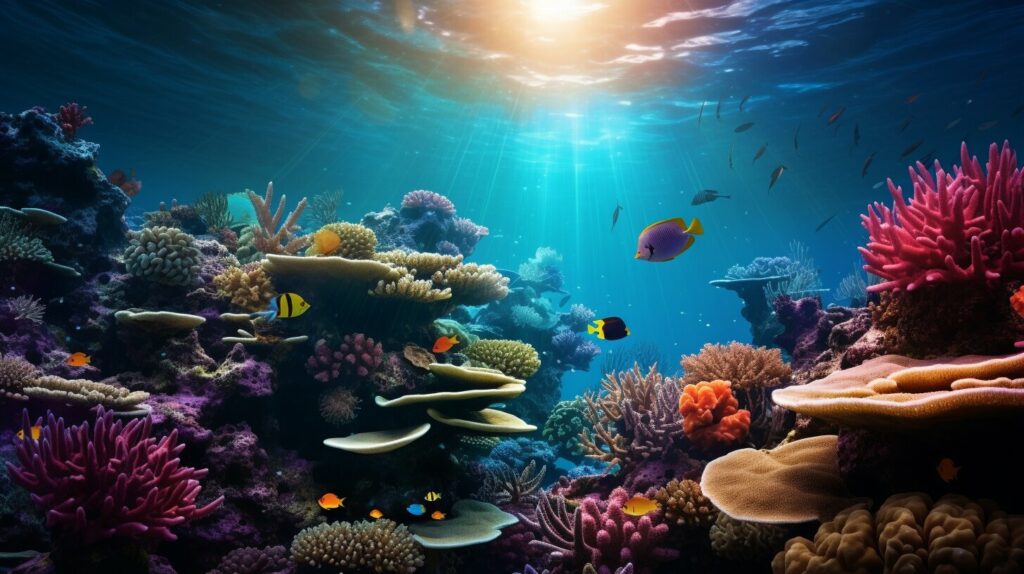
Pro Tip: When using artificial lights, it’s important to check the light’s color temperature. Different lights have different color temperatures which can affect the colors in your photos. Try using a color correction filter to help balance the color of your light with the natural light to get a more natural look.
Mastering Underwater Composition
Composition is an essential factor when it comes to creating visually appealing underwater photographs. It’s vital to understand how to capture and frame the subject in a way that tells a story or conveys a message. Here are some Snorkeling photography techniques to help you master underwater composition:
- When capturing marine life with a camera, try to frame your shot by positioning the subject in the foreground, with the background showcasing the colorful and vibrant underwater world.
- Experiment with different angles to add depth and dimension to your images. Try shooting up towards the surface or downwards to create a sense of movement.
- Utilize the rule of thirds – imagine breaking your frame into thirds vertically and horizontally, then placing your subject at one of the intersecting points. This will help create a more balanced and visually pleasing image.
- Don’t always center your subject. Off-center compositions can add visual interest and balance to your photos.
Remember, mastering underwater composition takes practice, so don’t be afraid to experiment and try out different techniques and angles. With time, you will develop an eye for framing and capturing stunning underwater images.
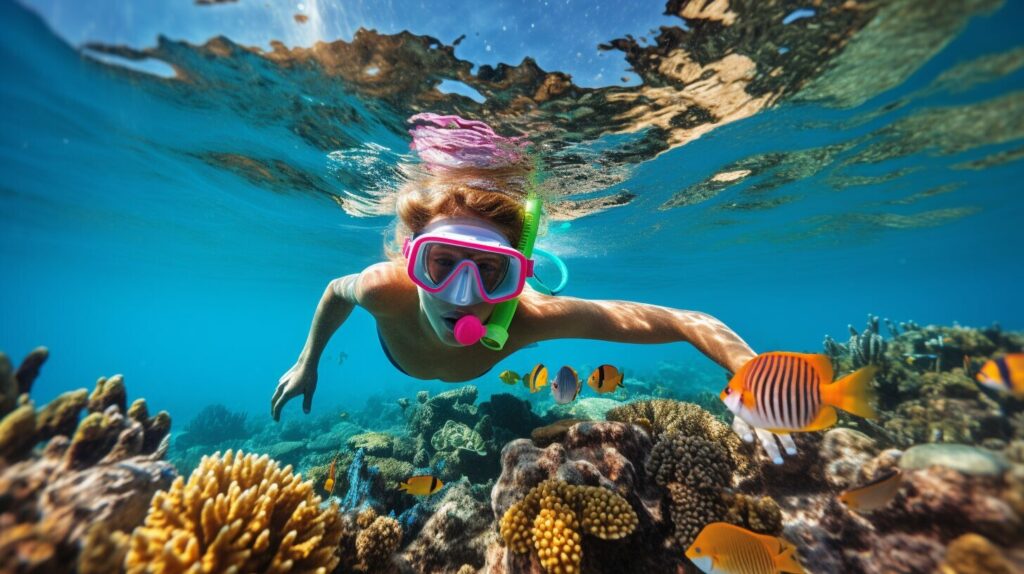
Overcoming Challenges in Underwater Photography
Snorkeling photography comes with its own set of challenges, but with the right techniques and preparations, you can overcome them and capture stunning images of the marine life beneath the surface. Here are some common challenges you may face and how to overcome them:
Buoyancy
When snorkeling and taking photos underwater, maintaining neutral buoyancy is crucial. Avoid touching the bottom or disturbing the marine life as this could damage the ecosystem. To maintain neutral buoyancy, use your breathing to control your depth, and adjust your weighting and equipment accordingly. Practice your buoyancy skills before attempting to take photos underwater.
Visibility
Visibility can vary depending on the location and weather conditions. To overcome poor visibility, try using a wide-angle lens to capture more of the scene. Additionally, get as close as possible to your subject and use natural light to your advantage. If necessary, consider using an underwater lighting option.
Camera Settings
Adjusting your camera settings underwater can be challenging, especially if you are not familiar with your equipment. To ensure the best results, experiment with different settings before snorkeling and adjust them accordingly based on the lighting conditions and your subject. Additionally, practice holding the camera steady and avoid using the zoom function as it can decrease image quality.
Waterproofing
Proper waterproofing of your camera and equipment is essential to prevent damage and ensure the longevity of your gear. Before snorkeling, check that all seals are properly sealed, and that your camera and accessories are securely fastened. Consider using an underwater housing to provide additional protection and enhance your camera’s capabilities.
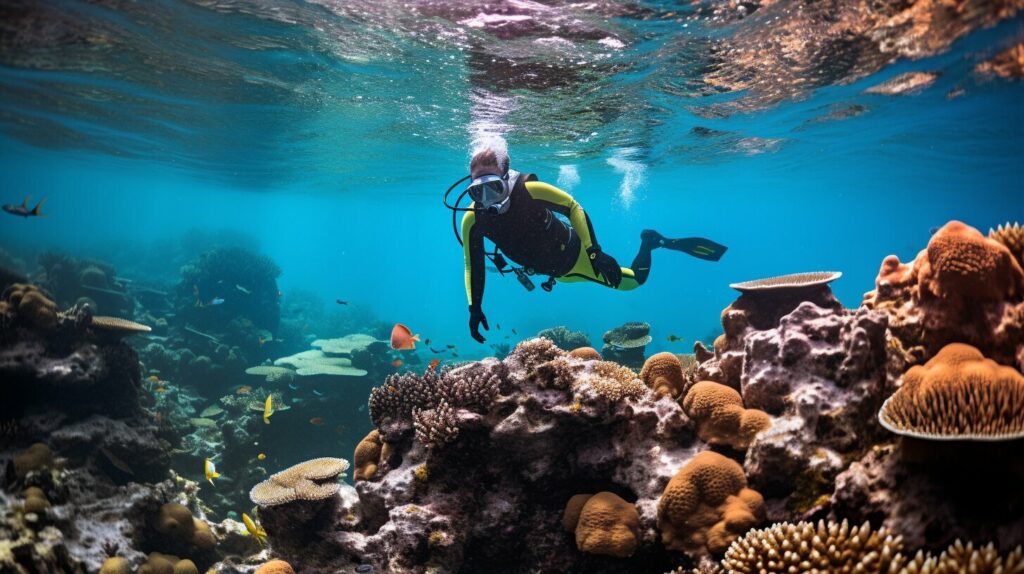
- Practice your buoyancy skills and avoid touching the bottom or disturbing the marine life.
- Use natural light to your advantage and consider using an underwater lighting option if necessary.
- Experiment with different camera settings before snorkeling, and adjust them based on the lighting conditions and your subject.
- Check that all seals are properly sealed, and that your camera and accessories are securely fastened before snorkeling.
Preparing Your Gear for Underwater Photography
To ensure successful underwater photography, you must prepare your gear correctly. Here are some essential steps to follow:
Step 1: Check Your Camera and Accessories
Make sure your camera and accessories are functioning correctly before your dive. Check the housing seals for any leaks, the battery charge, and the memory card capacity.
Step 2: Clean Your Gear
Before your dive, clean your camera and accessories thoroughly with fresh water. This will remove any salt, sand, or debris that may interfere with your camera’s functions or damage your gear.
Step 3: Learn Your Underwater Camera Settings
It’s essential to know how to adjust your camera settings underwater to capture the best shots. Take some time to become familiar with your camera’s settings, such as ISO, aperture, and shutter speed.
Step 4: Organize Your Underwater Photography Gear
Organize your underwater photography gear in a way that makes it easy to access when you need it. Keep your camera and accessories close at hand, and ensure that any extra gear, such as strobes or lenses, is securely attached and easily accessible.
Step 5: Use the Right Underwater Photography Gear
Ensure you have the right underwater photography gear for the type of photography you plan to do. Consider investing in high-quality gear such as a strobe or a wide-angle lens to enhance your photography.
Step 6: Practice With Your Gear
Practice using your camera and gear before your dive to build your confidence and ensure you’re ready for any challenges you may encounter while underwater. This will also help you become more familiar with your gear and improve your skills.
By following these essential steps, you will be well-prepared for your underwater photography adventure. Now, let’s move on to tips for taking photos underwater.
Tips for Taking Photos Underwater
Snorkeling photography requires a unique set of skills, especially when it comes to taking photos underwater. Here are some tips to help you capture stunning images while snorkeling:
- Control your breath: Breathing calmly and deeply will help you stay underwater longer and keep you from scaring marine life away.
- Find your buoyancy: Maintaining neutral buoyancy will help you stay still underwater and avoid stirring up sand or sediment.
- Get close to your subject: This will help you capture fine details of the marine life and make your photos more visually appealing.
- Experiment with angles: Try shooting from different angles, such as from above or below the subject, to add visual interest to your photos.
- Use the rule of thirds: Position the main subject of your photo along one of the intersecting lines using the rule of thirds to create a more balanced and dynamic composition.
- Adjust your camera settings: Depending on the lighting conditions and the subject you’re shooting, you may need to adjust your camera’s aperture, shutter speed, and ISO settings to achieve the desired effect.
- Take multiple shots: Don’t be afraid to take multiple shots of the same subject from different angles or with different camera settings. This will increase your chances of capturing the perfect shot.
- Practice, practice, practice: As with any skill, the more you practice, the better you will become. Keep experimenting with different techniques and camera settings to enhance your snorkeling photography skills.
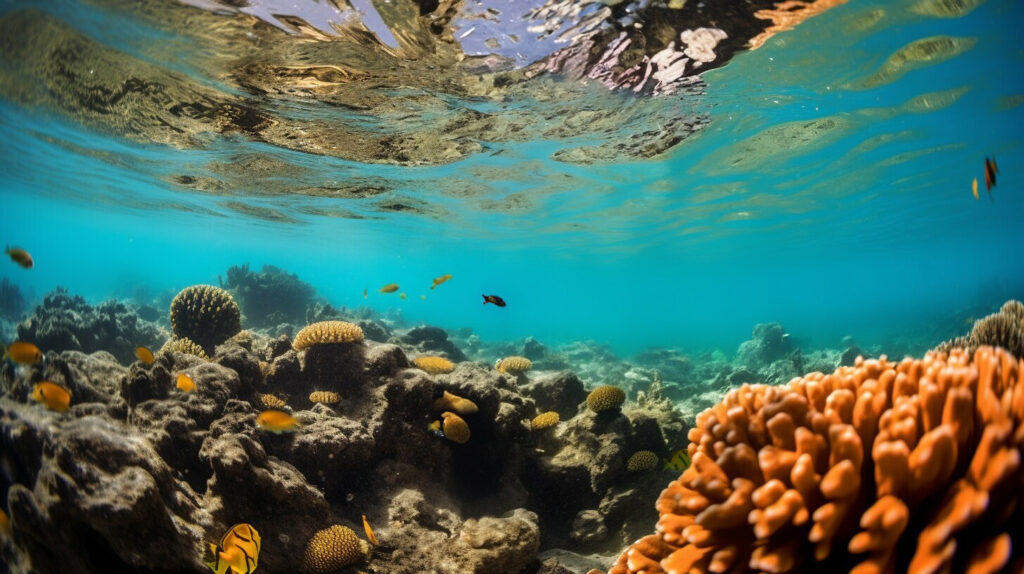
By following these tips and techniques, you can take your snorkeling photography to the next level and capture stunning images of the underwater world. Happy shooting!
Editing and Enhancing Your Underwater Photos
After capturing your breathtaking underwater shots, it’s time to take them to the next level by editing and enhancing them. With the right editing techniques, you can showcase the vivid colors, textures, and beauty of the marine life you encountered while snorkeling.
One of the essential steps in editing underwater photos is to white balance your images. Since different water conditions can cast different color hues on your shots, correcting the color balance can help your photos look more natural and vibrant. You can also adjust the brightness, contrast, and saturation levels to highlight specific details and add depth to your images.
There are various software options available for editing underwater photos. Adobe Photoshop and Lightroom are popular photo editing tools that offer advanced features for refining your shots. If you’re looking for an affordable and user-friendly alternative, you can try GIMP or RawTherapee, which are free and open-source software options that offer many professional-grade editing capabilities.
When editing your underwater photos, be careful not to over-manipulate them, as it can make them look unnatural and unrealistic. Remember that the most striking underwater photos are those that capture the essence and beauty of marine life as closely as possible.
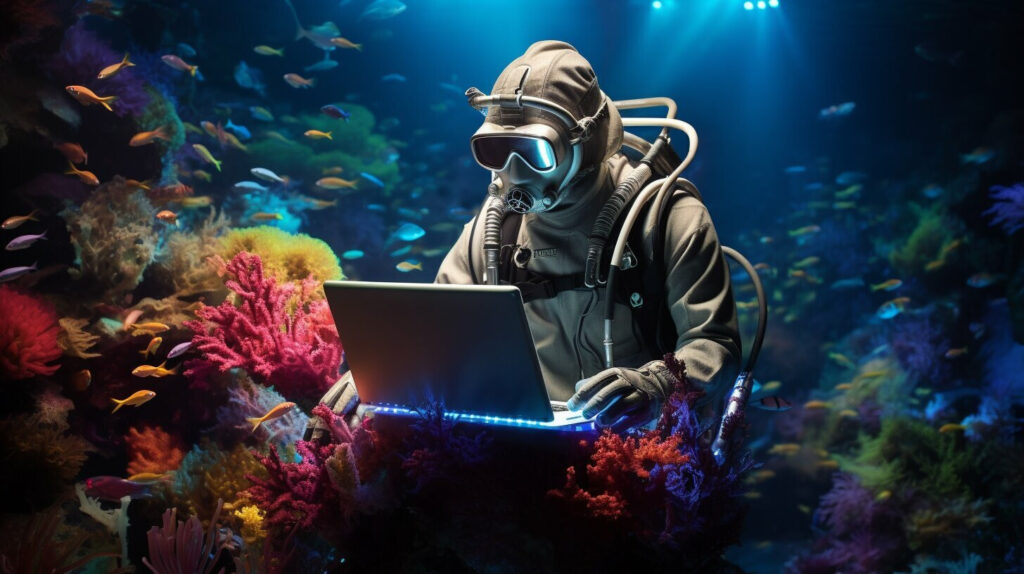
With the right techniques and software, you can transform your underwater photos into stunning works of art, capturing the essence of the marine life you encountered while snorkeling.
Showcasing and Sharing Your Underwater Photography
Now that you have captured stunning underwater images through your snorkeling expeditions, it’s time to share and showcase them with the world!
One way to share your photographs is through online platforms, such as social media and photography websites. Be sure to add relevant hashtags and descriptions to your posts to increase visibility and engagement.
Another option is to exhibit your work in galleries, art shows, and other public spaces. Consider reaching out to local art galleries or community centers to showcase your underwater photography.
If you want to take your underwater photography to the next level, consider publishing a book or creating a portfolio website. This will give you the opportunity to display your work in a more professional and curated manner, and potentially attract more clients or collaborations.
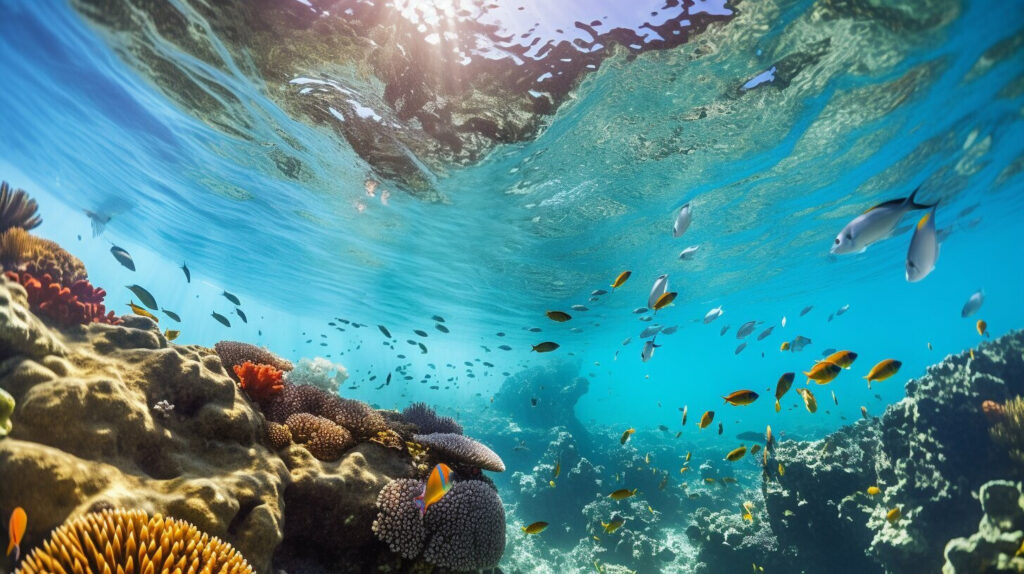
Whatever your preference, showcasing and sharing your underwater photography is a fantastic way to celebrate the beauty of marine life and inspire others to explore the underwater world. Keep honing your snorkeling photography techniques and experimenting with new ideas to continue capturing striking underwater images.
Conclusion
You have now completed our step-by-step guide to mastering underwater photography for snorkelers. With a solid understanding of the basics, the right equipment, and effective snorkeling photography techniques, you are ready to capture stunning imagery of the captivating marine life beneath the surface.
Remember, practice makes perfect, and with patience and persistence, you can continue to improve your underwater photography skills. Don’t be afraid to experiment with different techniques and angles and try out new equipment to further enhance your photography.
Whether you want to showcase your underwater photos online, through exhibitions, or other mediums, there are plenty of opportunities to share your beautiful imagery with others. So, keep shooting, keep exploring, and most importantly, have fun!
FAQ
Q: What is underwater photography?
A: Underwater photography is the art and practice of capturing images while submerged underwater. It allows photographers to document the fascinating marine life and underwater landscapes.
Q: Do I need special equipment for underwater photography?
A: Yes, underwater photography requires specialized equipment such as an underwater camera, housing, and additional accessories like strobes or lights. These tools are designed to protect your camera from water damage and help you achieve better image quality underwater.
Q: What camera settings should I use for underwater photography?
A: The camera settings for underwater photography can vary depending on the lighting conditions, depth, and the desired effect. However, it is generally recommended to use a wide aperture (low f-number) for shallow depth of field, a fast shutter speed to freeze motion, and a higher ISO to compensate for low light conditions.
Q: How can I improve my composition in underwater photography?
A: To improve your composition in underwater photography, consider factors such as the rule of thirds, leading lines, and creating balanced images. Experiment with different angles and perspectives to add depth and interest to your underwater compositions.
Q: What are some challenges in underwater photography and how can I overcome them?
A: Some common challenges in underwater photography include poor visibility, limited natural light, and water movement. To overcome these challenges, practice proper buoyancy control, use artificial lighting sources to enhance the lighting conditions, and choose locations with good visibility for better results.
Q: Can I edit my underwater photos to enhance their quality?
A: Yes, you can enhance your underwater photos through editing. Adjustments such as color correction, contrast enhancement, and removing backscatter can significantly improve the overall quality of your underwater images. There are various software options available for editing underwater photos.
Q: How can I showcase and share my underwater photography?
A: There are several ways to showcase and share your underwater photography. You can create an online portfolio or website to display your work, participate in exhibitions or competitions, or even publish your images in print or online publications. Social media platforms are also a popular medium for sharing underwater photography.

